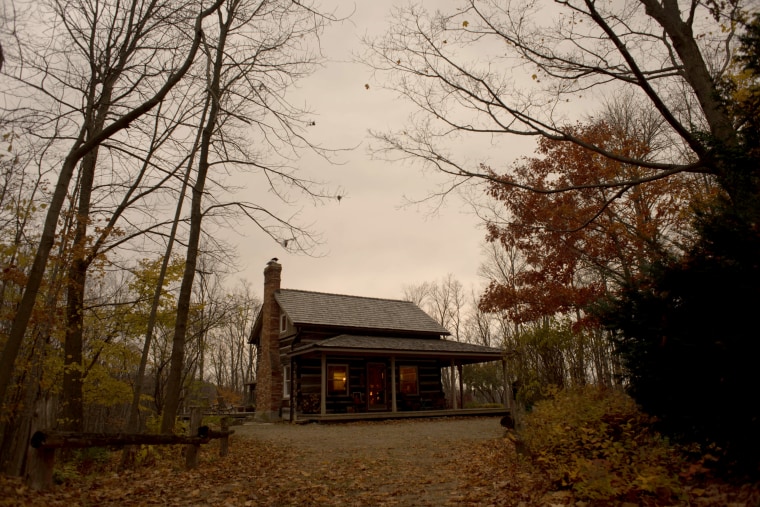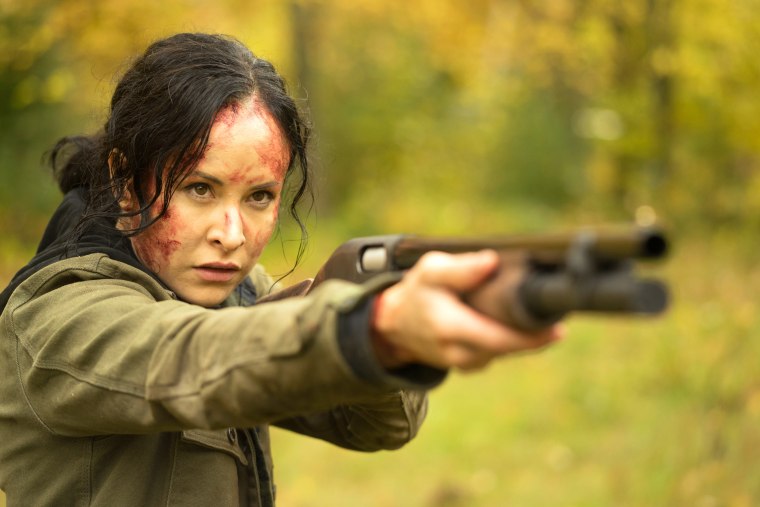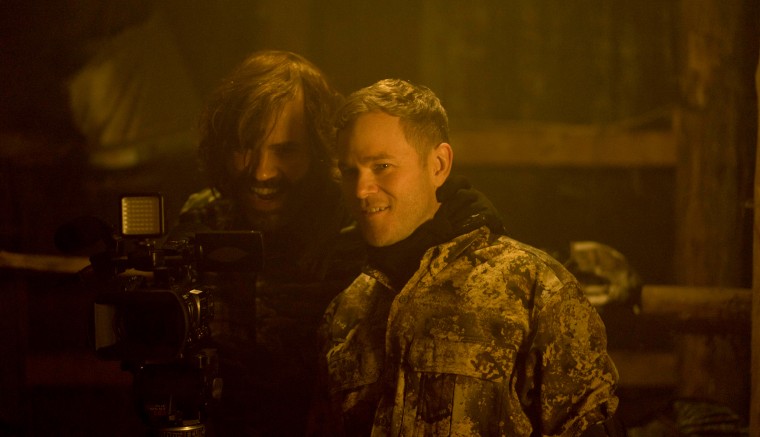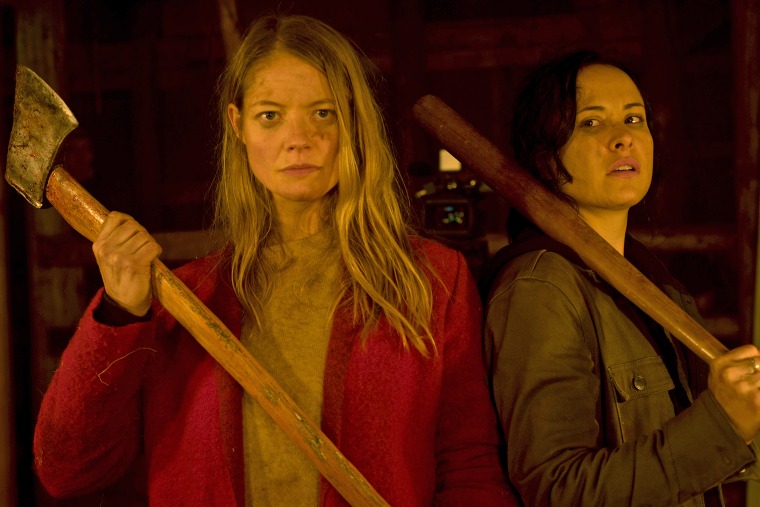From the moment Renee and Valerie leave the city, there are signs that their rural weekend trip is going to take a grim turn.
At a gas station, the lesbian couple encounter a misogynistic brew that includes a "Take your ex out tonight. One bullet outta do it" bumper sticker and a leering station attendant with a toothpick in his mouth. Valerie is aggressively hit on by a fellow customer, prompting Renee — in a fib all too familiar with same-sex couples in vulnerable positions — to say she and Valerie are related.
Minutes later, while changing a flat tire on a desolate road, a pickup truck careens by, causing Renee — and the viewer — to jump up in fear. “That’s why I don’t like leaving the f------ city,” she says.

If this scenario from “The Retreat” hits close to home for LGBTQ viewers or anyone who knows what it’s like to feel vulnerable because of potential discrimination, that’s because it’s based on the real-life experience of the film’s writer, Alyson Richards, who was inspired to write “The Cabin in the Woods”-turned-queer-revenge plot after one of her own trips.
During a stay at a remote cabin “in the middle of nowhere” with her wife, Alyson said the hosts, whom she never saw, appeared to be keeping tabs on the couple’s comings and goings. “We started to feel like we were being watched,” she told NBC News.
“Particularly as queer women, you start to feel really vulnerable and unsure about just how vulnerable you are,” Richards said. “I have an active imagination, so I went to the like, ‘Who are these people? What do they think of us?’ The dark version of it is the movie.”
In that movie version, which comes out Friday in select theaters and on various video-on-demand platforms, the couple played by Tommie-Amber Pirie and Sarah Allen leave an unnamed city to go to a rural cabin to attend a wedding planning retreat for their friends, a gay couple. The getaway becomes a literal retreat, as they are hunted, surveilled and tortured by a group of homophobic extremists. But any parallels to horror movies that are quick to dispose of characters from marginalized identities end there.
Richards grew up watching horror films with her longtime friend and director of “The Retreat,” Pat Mills. She said as LGBTQ people, they never felt “loved back by the genre,” so they sought out to create more representation and challenge the “not great” narratives usually assigned to queer characters.
Prominent among these narratives in recent years is the “bury your gays” trope, which gained traction in popular culture after several queer women characters were killed off of popular television shows such as “The 100” and “The Walking Dead” in the mid-2010s. But, spoiler alert: In “The Retreat,” the hunted become the hunters.

“There's something about that spirit of fighting back that I think is totally deserving, and it is a movie where you can explore and play with that, but we also wanted it to feel grounded,” Richards said. To draw on that grounded feeling, Richards said it was important to cast actors from the LGBTQ community, such as Pirie, who “brought her own interactions with the world” into her portrayal of Renee.
As other horror films before it — from “Night of the Living Dead” to “Get Out” — have operated as allegories for social issues and anxieties, “The Retreat” inverts another trope for LGBTQ characters in the genre: the evil gay antagonist. The villains in “The Retreat” are the white, straight, camouflage-wearing locals who are intended to be representative of the real-life “alt-right extremists” that have been consistently making national headlines.
Amid a push in Hollywood for greater racial diversity in productions, Richards said there were internal discussions about the largely white cast of “The Retreat.” Hiring queer actors was a priority, she said, along with cast chemistry. "Beyond that it just came down to who would realistically live in this area and who would really be the antagonist,” she added, a reference to the anti-LGBTQ views of many alt-right extremists, who are typically white.

While viewers might squirm in their seats watching Renee practically break her wrist trying to escape from zip-tie handcuffs, the filmmakers intentionally left violence against the LGBTQ characters off-screen. Given the real-life prevalence of hate crimes against queer people, Richards said she and Mills didn’t want to explicitly show any violence against them. The filmmakers wanted to entertain and satisfy the elements of a horror movie, so instead the gore — including a memorable scene involving a computer monitor and someone’s head — is reserved for the villains.
While some of the violence might be implied, Renee and Valerie’s commitment issues are not, as their relationship is put through an actual survival test. Rather than create a perfect pair, Richards sought to put a three dimensional lesbian couple at the forefront.
So, how does Richards feel about the movie being called a “lesbian slasher”?
“I love it, because I think there's some reclaiming.”

